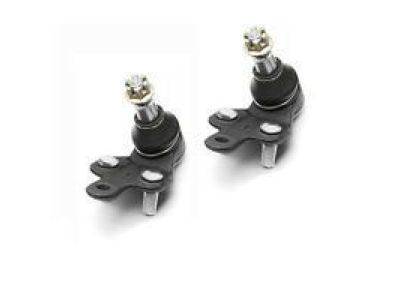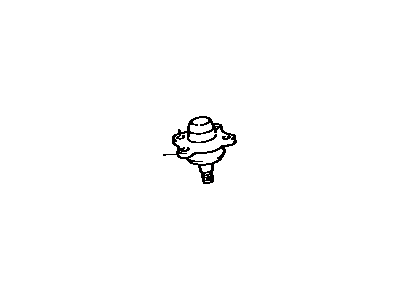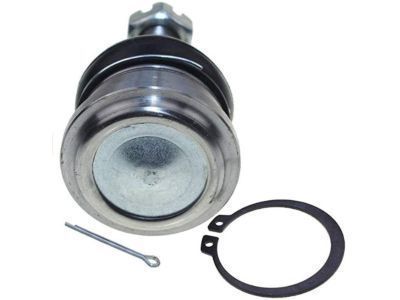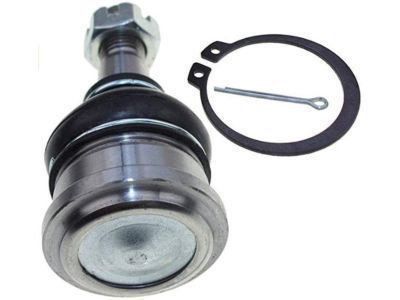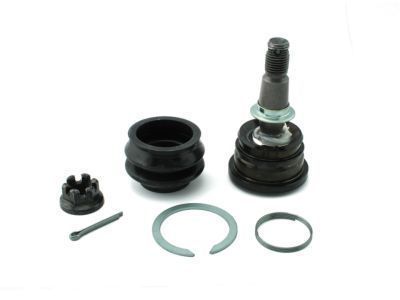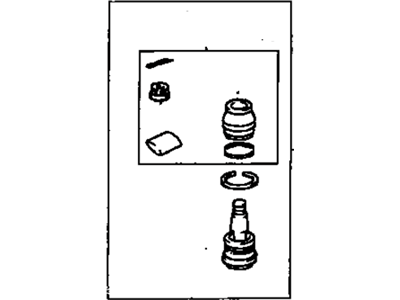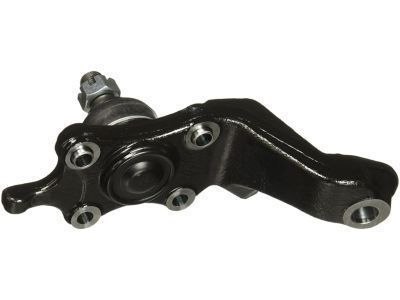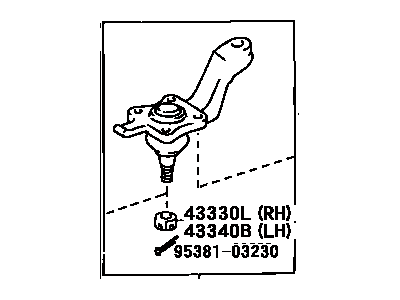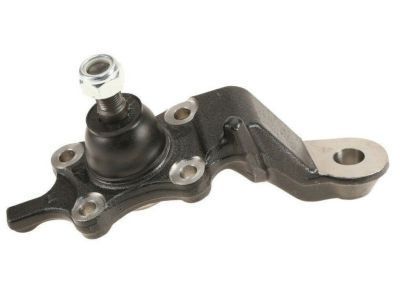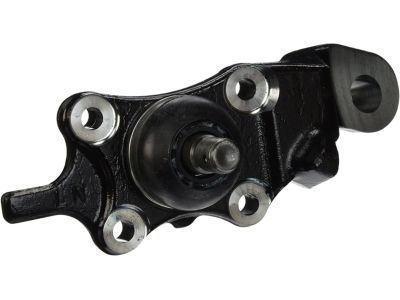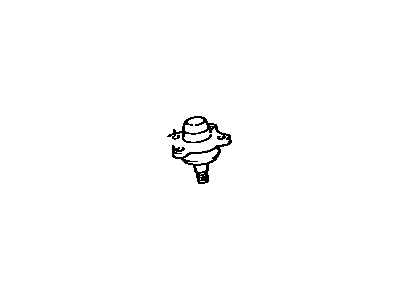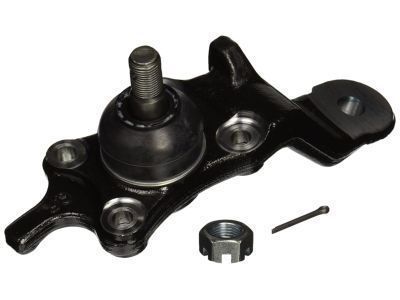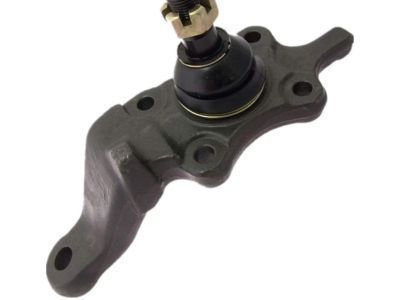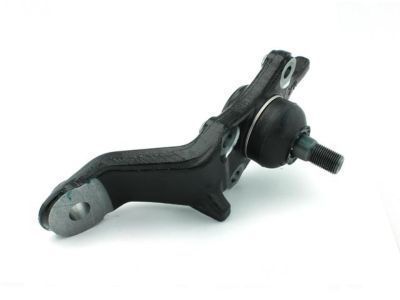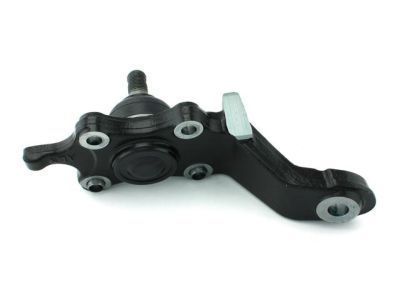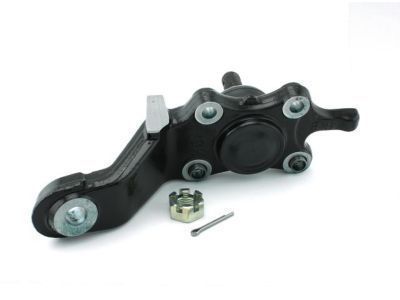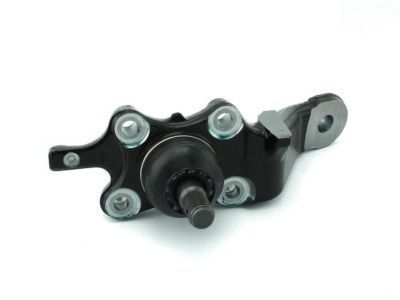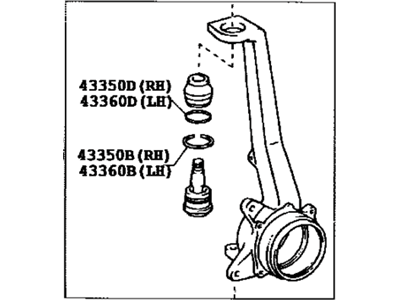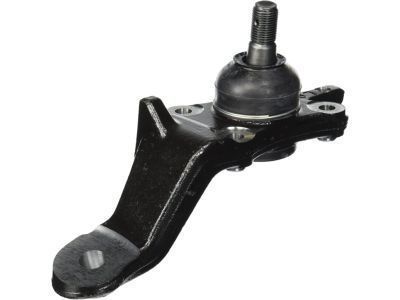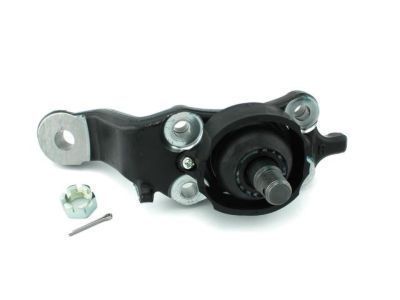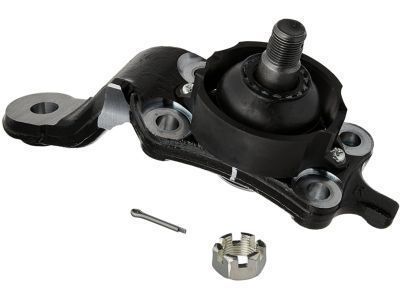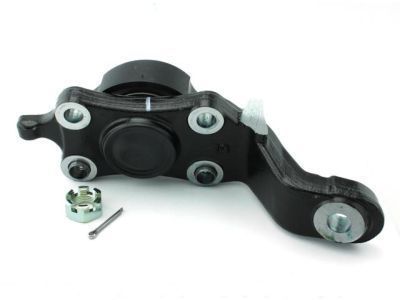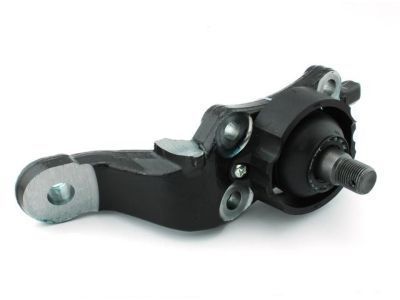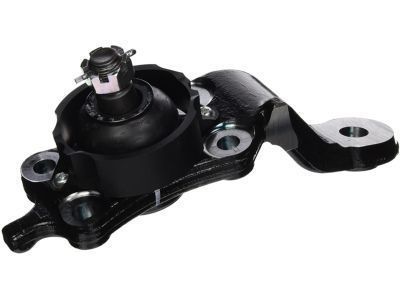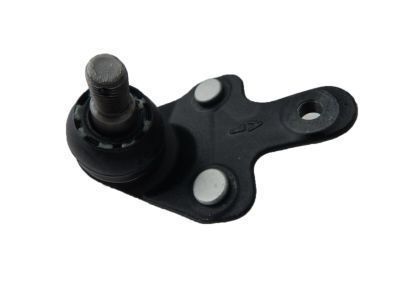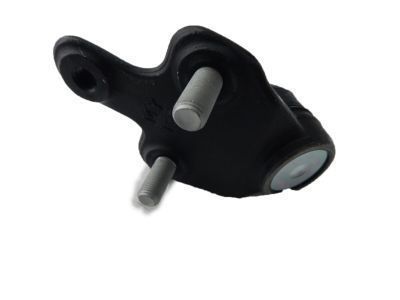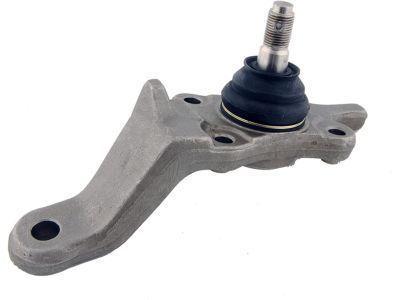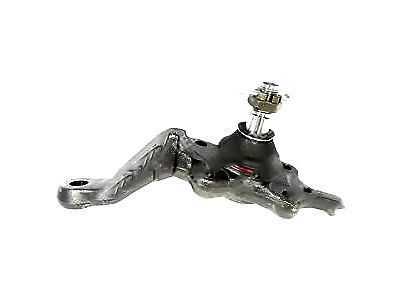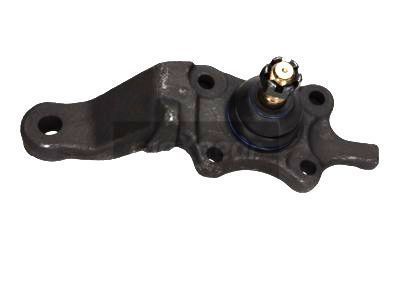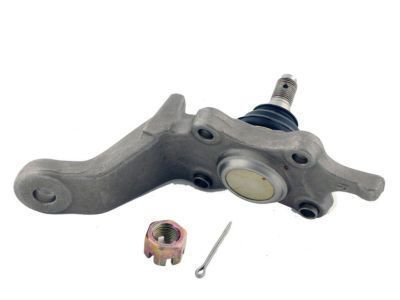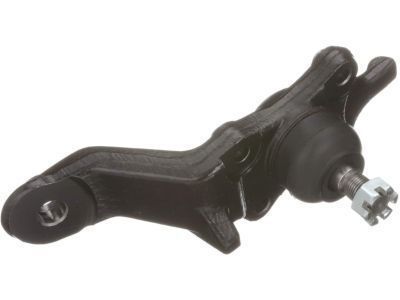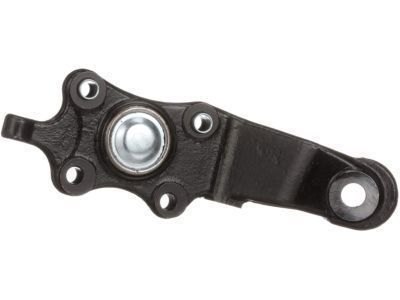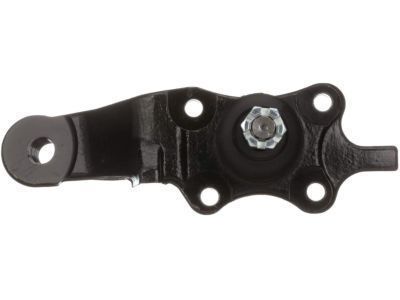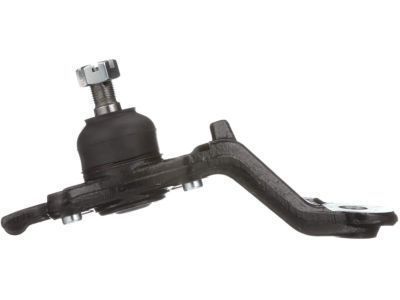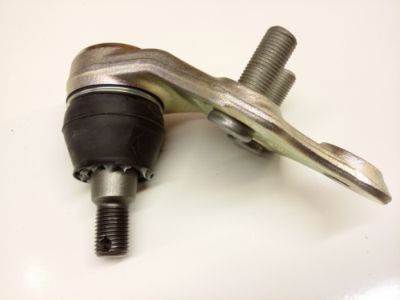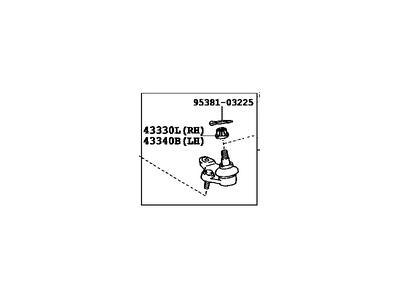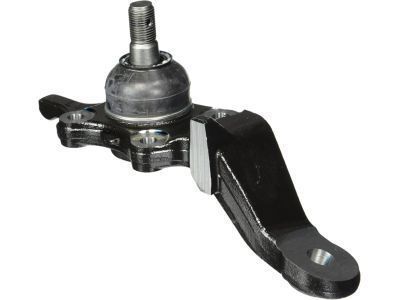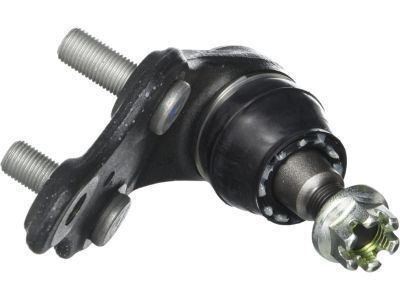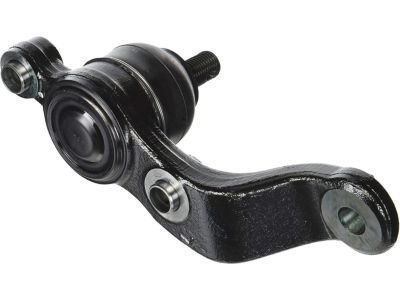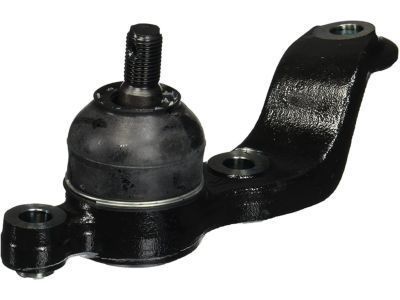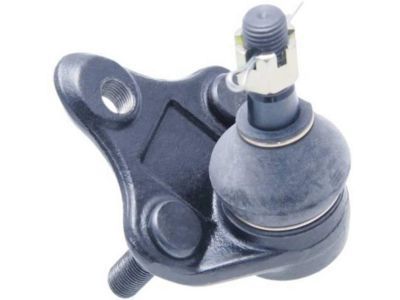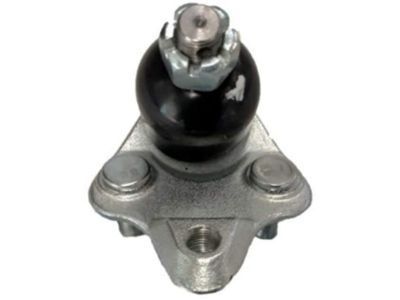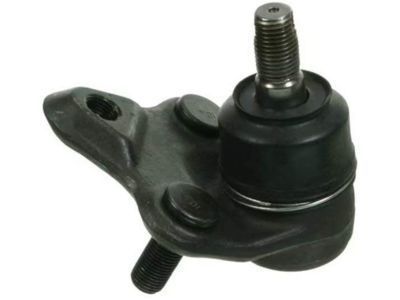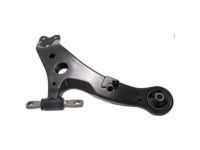

My Garage
My Account
Cart
Genuine Toyota Ball Joint
Control Arm Joint- Select Vehicle by Model
- Select Vehicle by VIN
Select Vehicle by Model
orMake
Model
Year
Select Vehicle by VIN
For the most accurate results, select vehicle by your VIN (Vehicle Identification Number).
160 Ball Joints found
Toyota Front Upper Right Suspension Ball Joint Assembly
Part Number: 43330-09780$73.50 MSRP: $103.61You Save: $30.11 (30%)Ships in 1-3 Business DaysProduct Specifications- Other Name: Joint Assembly, Lower Ball, Front Rh; Ball Joint, Lower Ball Joint
- Position: Front Passenger Side
Toyota Front Upper Right Suspension Ball Joint Assembly
Part Number: 43310-39016$49.73 MSRP: $69.51You Save: $19.78 (29%)Ships in 1-3 Business DaysProduct Specifications- Other Name: Joint Assembly, Front Upper Ball, Rh; Upper Ball Joint, Upper Ball Joints
- Position: Front Upper Passenger Side
- Replaces: 43310-39085, 43310-39065
Toyota Lower Ball Joint Assembly Front Right
Part Number: 43330-39556$134.30 MSRP: $190.93You Save: $56.63 (30%)Ships in 1-3 Business DaysProduct Specifications- Other Name: Joint Assy, Lower Ball, Front Rh; Lower Ball Joint
- Position: Front Passenger Side
- Replaces: 43330-39555
Toyota Front Upper Left Suspension Ball Joint Assembly
Part Number: 43340-39436$117.16 MSRP: $165.16You Save: $48.00 (30%)Ships in 1-3 Business DaysProduct Specifications- Other Name: Joint Assy, Lower Ball, Front Lh; Lower Ball Joint
- Position: Front Driver Side
- Replaces: 43340-39435
Toyota Lower Ball Joint Assembly Front Right
Part Number: 43330-39585$125.76 MSRP: $178.79You Save: $53.03 (30%)Ships in 1-3 Business DaysProduct Specifications- Other Name: Joint Assy, Lower Ball, Front Rh; Lower Ball Joint
- Position: Front Passenger Side
- Replaces: 43330-39575, 43330-39415
Toyota Front Lower Left Suspension Ball Joint Assembly
Part Number: 43340-39465$126.70 MSRP: $180.13You Save: $53.43 (30%)Ships in 1-3 Business DaysProduct Specifications- Other Name: Lower Ball Joint Assembly, Front Driver Side; Lower Ball Joint
- Position: Front Driver Side
- Replaces: 43340-39475, 43340-39325, 43340-39455
Toyota Lower Ball Joint Assembly Front Right
Part Number: 43330-39466$108.19 MSRP: $152.52You Save: $44.33 (30%)Ships in 1-3 Business DaysProduct Specifications- Other Name: Joint Assy, Lower Ball, Front Rh; Lower Ball Joint
- Position: Front Passenger Side
- Replaces: 43330-39465
Toyota Joint Assembly, Lower Ball, Front Left
Part Number: 43340-39356$108.19 MSRP: $152.52You Save: $44.33 (30%)Ships in 1-3 Business DaysProduct Specifications- Other Name: Joint Assy, Lower Ball, Front Lh; Lower Ball Joint
- Position: Front Driver Side
- Replaces: 43340-39355
Toyota Lower Ball Joint Assembly Front Right
Part Number: 43330-39825$145.19 MSRP: $206.40You Save: $61.21 (30%)Product Specifications- Other Name: Joint Assy, Lower Ball, Front Rh; Lower Ball Joint
- Position: Front Passenger Side
- Replaces: 43330-39615, 43330-39805, 43330-39655
Toyota Joint Assembly, Lower Ball, Front Left
Part Number: 43340-39595$146.47 MSRP: $208.24You Save: $61.77 (30%)Product Specifications- Other Name: Joint Assy, Lower Ball, Front Lh; Lower Ball Joint
- Position: Front Driver Side
- Replaces: 43340-39495, 43340-39575, 43340-39515
Toyota Front Upper Left Suspension Ball Joint Assembly
Part Number: 43340-09140$72.91 MSRP: $102.78You Save: $29.87 (30%)Ships in 1-3 Business DaysProduct Specifications- Other Name: Joint Assembly, Lower Ball, Front Lh; Ball Joint, Lower Ball Joint
- Position: Front Driver Side
Toyota Lower Ball Joint Assembly Front Right
Part Number: 43330-39415$125.76 MSRP: $178.79You Save: $53.03 (30%)Ships in 1-3 Business DaysProduct Specifications- Other Name: Joint Assy, Lower Ball, Front Rh
- Position: Front Passenger Side
- Replaced by: 43330-39585
Toyota Front Lower Left Suspension Ball Joint Assembly
Part Number: 43340-39325$126.70 MSRP: $180.13You Save: $53.43 (30%)Ships in 1-3 Business DaysProduct Specifications- Other Name: Lower Ball Joint Assembly, Front Driver Side
- Position: Front Driver Side
- Replaced by: 43340-39465
Toyota Lower Ball Joint Assembly Front Right
Part Number: 43330-39605$131.50 MSRP: $186.95You Save: $55.45 (30%)Ships in 1-3 Business DaysProduct Specifications- Other Name: Joint Assy, Lower Ball, Front Rh; Lower Ball Joint
- Position: Front Passenger Side
Toyota Front Right Lower Suspension Ball Joint Assembly
Part Number: 43330-09810$62.76 MSRP: $88.48You Save: $25.72 (30%)Ships in 1-3 Business DaysProduct Specifications- Other Name: Joint Assembly, Lower Ball, Front Rh; Ball Joint, Lower Ball Joint
- Position: Front Passenger Side
- Replaces: 43330-09330
Toyota Front Upper Left Suspension Ball Joint Assembly
Part Number: 43340-39485$131.50 MSRP: $186.95You Save: $55.45 (30%)Ships in 1-3 Business DaysProduct Specifications- Other Name: Joint Assy, Lower Ball, Front Lh; Lower Ball Joint
- Position: Front Driver Side
Toyota Front Left Lower Suspension Ball Joint Assembly
Part Number: 43340-09170$62.29 MSRP: $87.81You Save: $25.52 (30%)Ships in 1-3 Business DaysProduct Specifications- Other Name: Joint Assembly, Lower Ball, Front Lh; Ball Joint, Lower Ball Joint
- Position: Front Driver Side
- Replaces: 43340-09040
Toyota Front Upper Left Suspension Ball Joint Assembly
Part Number: 43340-39445$73.38 MSRP: $103.44You Save: $30.06 (30%)Ships in 1-2 Business DaysProduct Specifications- Other Name: Joint Assy, Lower Ball, Front Lh; Lower Ball Joint
- Position: Front Driver Side
- Replaces: 43340-39275
Toyota Lower Ball Joint Assembly Front Right
Part Number: 43330-39565$92.85 MSRP: $130.89You Save: $38.04 (30%)Ships in 1-2 Business DaysProduct Specifications- Other Name: Joint Assy, Lower Ball, Front Rh; Lower Ball Joint
- Position: Front Passenger Side
- Replaces: 43330-39355
Toyota Front Left Lower Suspension Ball Joint Assembly
Part Number: 43330-19115$62.41 MSRP: $87.98You Save: $25.57 (30%)Ships in 1-3 Business DaysProduct Specifications- Other Name: Joint Assembly, Lower Ball, Front Lh; Ball Joint, Lower Ball Joint
- Position: Front Lower Driver Side
| Page 1 of 8 |Next >
1-20 of 160 Results
About Toyota Ball Joint
A Toyota ball joint is a pivot point between the suspension and tires, which supports the vehicle's weight. Typically the ball joints are sphere shaped bearings which connect vehicle control arms to their steering knuckles. When the ball joints are functioning correctly, your tires will wear evenly and the suspension will be quiet and smooth. The upper and lower ball joints will be found in the front suspension of your Toyota. The roughest roads and driving conditions will lead to premature failure of your ball joints. To replace the ball joint, jack up your Toyota, pull the ball joint cotter pin, pop the ball joint loose, and then remove and replace with the new joint.
You can inspect the ball joint by jacking up the control arm or front of the vehicle, and looking for excessive wheel play. If your ball joint malfunctions, your front suspension will clunk loudly, the driving handling will suffer and it could unexpectedly fall apart. The ball joint works closely with the control arms and axles in the front suspension of your Toyota to keep your car handling like it should. If not replaced in time, a broken ball joint can lead to excessive front suspension failure.
Welcome to ToyotaPartsDeal.com. If you are looking for a Toyota ball joint with a cheap price and high specification, you are in the right place. We offer you a convenient and easy shopping experience. There is no need to sign in for checking out, and all you need to do is clicking the part you need and paying for it for one second. We will ship it out as soon as possible for you to solve your urgent need. Do not hesitate more, you cannot find another one like us, and we are always you first choice for your Toyota genuine parts.
You can inspect the ball joint by jacking up the control arm or front of the vehicle, and looking for excessive wheel play. If your ball joint malfunctions, your front suspension will clunk loudly, the driving handling will suffer and it could unexpectedly fall apart. The ball joint works closely with the control arms and axles in the front suspension of your Toyota to keep your car handling like it should. If not replaced in time, a broken ball joint can lead to excessive front suspension failure.
Welcome to ToyotaPartsDeal.com. If you are looking for a Toyota ball joint with a cheap price and high specification, you are in the right place. We offer you a convenient and easy shopping experience. There is no need to sign in for checking out, and all you need to do is clicking the part you need and paying for it for one second. We will ship it out as soon as possible for you to solve your urgent need. Do not hesitate more, you cannot find another one like us, and we are always you first choice for your Toyota genuine parts.
Toyota Ball Joint Parts Questions & Experts Answers
- Q: Can the Ball Joints on the Lower and Upper Control Arms Be Replaced Individually on a Toyota Supra?A:The lower control arm balljoints on models from 1979 to 1986 and the upper control arm balljoints on models from 1987 and later cannot be replaced individually; if worn, the entire control arm must be replaced, although the lower control arm balljoints on 1987 and later models are replaceable. To check for wear, raise the vehicle and support it securely on jackstands, then visually inspect the rubber boot for any cuts, tears, or leaking grease, which would necessitate replacement. Use a large prybar to push the balljoint up and check for excessive vertical or lateral movement; any movement indicates a worn balljoint. An assistant can shake the tire while you check for looseness at the balljoint stud nut, which may suggest a worn stud or a widened hole in the steering knuckle boss, requiring replacement of both the steering knuckle and balljoint if the latter issue is present. For replacing the lower balljoint on 1987 and later models, loosen the wheel lug nuts, raise the vehicle, and support it securely on jackstands. Remove the circlip from the balljoint stud and loosen the castle nut, then separate the balljoint from the steering knuckle using a balljoint separator and remove the nut. Take out the three bolts retaining the balljoint to the lower control arm and slide the balljoint out. To install the new balljoint, position it on the lower arm and install the bolts without tightening them yet. Insert the balljoint stud into the steering knuckle, install the nut, and tighten it to the specified torque. Finally, tighten the balljoint-to-lower arm bolts to the specified torque, install the wheel and lug nuts, lower the vehicle, and tighten the lug nuts to the specified torque.
- Q: How to inspect the upper and lower ball joints for looseness on a 2005-2009 Toyota Tacoma?A:Inspect the upper and lower balljoints for looseness whenever the vehicle is raised for any reason by first raising the front of the vehicle and securely supporting it on jackstands. Clean the balljoints and check the seals for cuts and tears; if a seal is damaged, it can be replaced by removing the wire clip and pulling it off the joint, followed by replacing any lost grease and carefully reassembling the components. For the lower balljoint, with the vehicle raised and the lower control arm supported by a floor jack, attach a dial indicator to the lower control arm, ensuring the plunger touches the steering knuckle. Apply about 65 pounds of force up and down on the brake disc while checking the dial indicator for play; if there is more than 0.020-inch of play, replace the suspension arm. If a dial indicator is unavailable, feel for play when applying pressure to the brake disc and replace the suspension arm if any play is detected. For the upper balljoint, with the vehicle raised and supported by the frame, pry up and down on the upper control arm to feel for play; significant play indicates the need for a suspension arm replacement. Balljoints should also be checked when separated from the steering knuckle or control arms by attempting to turn the ballstud in its socket; if it is loose, replace the balljoint or suspension arm. For a more accurate bench test, flip the balljoint stud back and forth five times, install the nut, and measure the turning torque with an inch-pound torque wrench, turning the nut continuously at a rate of one turn every two to four seconds. On the fifth turn, compare the indicated torque to the acceptable range; if it falls outside this range, the balljoint is worn out.
Related Toyota Parts
Browse by Model
4Runner Ball Joint Avalon Ball Joint C-HR Ball Joint Camry Ball Joint Celica Ball Joint Corolla Ball Joint Corolla Cross Ball Joint Corolla iM Ball Joint Corona Ball Joint Crown Ball Joint FJ Cruiser Ball Joint GR Corolla Ball Joint Grand Highlander Ball Joint Highlander Ball Joint Land Cruiser Ball Joint MR2 Ball Joint Matrix Ball Joint Mirai Ball Joint Paseo Ball Joint Pickup Ball Joint Previa Ball Joint Prius AWD-e Ball Joint Prius Ball Joint Prius Prime Ball Joint Prius V Ball Joint RAV4 Ball Joint RAV4 Prime Ball Joint Sequoia Ball Joint Sienna Ball Joint Solara Ball Joint Supra Ball Joint T100 Ball Joint Tacoma Ball Joint Tercel Ball Joint Tundra Ball Joint Van Ball Joint Venza Ball Joint bZ4X Ball Joint
